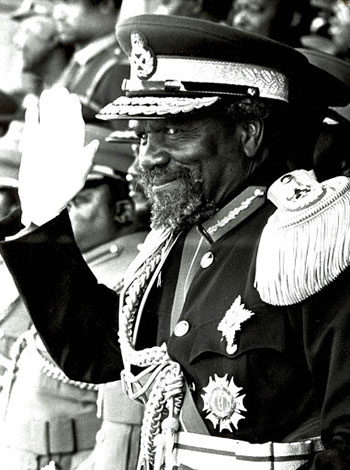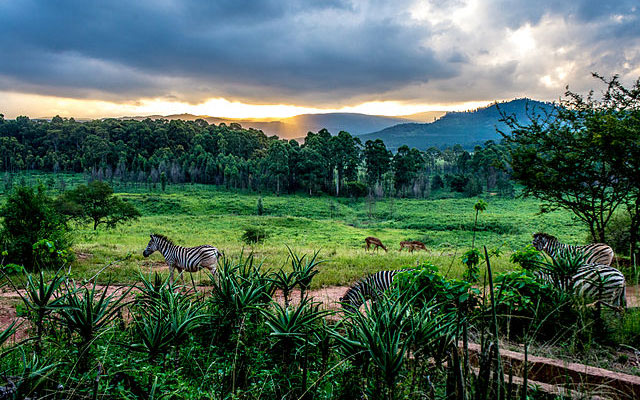
116, Part 4. The Civilized Massacre
I had wanted to film the KwaZulu Natal Shark Research Institute that has acquired a worldwide reputation for its work with these fearsome creatures. However, with our very limited finances I had to make the hard decision to leave it until we had full funding for the film. I was determined to at least film two more areas, namely Swaziland and Duiwelskloof, before editing what we had and seeking a major investor. Dennis told me that he proposed to speak to a large building society with whom he had a good connection. He was very confident that they would like to back a film with a strong conservation story.
Swaziland is a small kingdom that lies between the countries of South Africa and Mozambique. In fact, it is smaller than the US state of New Jersey. Its name has recently been changed from Swaziland to Eswatini, which translates as “The land of the Swazis” – the difference being that it is an entirely African name now. There has been an obsession in Africa in recent years with removing any hint of the old colonial nomenclatures. Although I am sympathetic to these changes, it does make for confusing searches for places that were previously named something entirely different. For example, in South Africa, the new name for Pretoria is Tshwane, a Tswana name for what was the Apies River which runs through the city. Apies is the Afrikaans word for little monkeys, found in great numbers around the river before civilization drove them away.

At the time that we filmed, Swaziland was still Swaziland and ruled by the much-revered old King Sobhuza II – in fact, the longest reigning monarch in recorded history, ruling for 82 years (eat your heart out, Queen Elizabeth!). My parents were living on the outskirts of the major town, Mbabane. My dad introduced me to Ted Reilly. He was a couple of years younger than me and had attended Hilton College, the closest and fiercest rival to my old school, Michaelhouse. I decided not to hold that against him and soon discovered that he was a remarkable person who virtually single-handedly started to restore the wildlife population of the Swazi highlands that had been decimated in the early years of the 1900s.
Swaziland in the 1800s had been regarded as a hunter’s paradise with prolific wildlife roaming both the highlands and the lowlands of the tiny country. A yearlong hunter’s license could be obtained for £1 in UK money. As with so much of Africa, it was thought that game was so plentiful that it would never be affected by hunters. Sadly, natural disease such as the rinderpest and a wildebeest plague, as well as excessive hunting, the setting of poison traps, the overuse of herbicides and pesticides, combined to virtually wipe out all indigenous game in the Swazi highlands. In the 1930s, for example, soldiers were employed with machine guns to wipe out the large wildebeest herds, with up to a thousand carcasses a week exported by train, presumably for their meat. The justification for this slaughter was that the wild animals were considered vermin and a danger to the cattle ranchers in the area. This happened in other parts of southern Africa as well.
Ted’s father Mickey Reilly had started farming in the Ezulwini Valley (Valley of Heaven) in 1906 on a beautiful area below Mlilwane Hill. The farm was ringed by steep hills and the name Mlilwane (which means “little fire”) is so called because of frequent lightning strikes which cause grass fires. However, the name was also used to signify the little fire created by Ted Reilly which ignited the entire conservation movement in Swaziland.
Mickey Reilly developed a successful mixed farming operation on Mlilwane. He also discovered a large deposit of tin on the farm and at one point was among the biggest employers of labor in the area. Ted grew up on the farm and from an early age was horrified by the steady decline of wildlife in the area. The last wild animal on the highlands died in 1959. After spending a few years in South Africa with either the National Parks Board or Natal Parks Board, I forget which, training as a game ranger, Ted returned to Mlilwane and managed to persuade his father that the farm should be converted into a game sanctuary.
At the time, both the Swazi community and the white farmers in the area were opposed to the idea, fearing that the re-introduction of game would once again affect their agricultural activities. Ted was fortunate that King Sobhuza II was enthusiastic about the young man’s plans. As an absolute monarch, his word was law. Not only did the king support the creation of the Mlilwane Wildlife Sanctuary, he even donated some of his own game from the lowlands to help restock Mlilwane.

Ted was severely hampered by lack of finance for his project, but nevertheless he persevered. In the early days when we arrived to film at Mlilwane, he only had one vehicle suitable for game catching, a battered old US army jeep! Furthermore, his catching technique was, in a word, terrifying! We accompanied Ted down to the lowlands where he planned to relocate some zebra back to Mlilwane. Ted was a man of few words. He loaded us aboard his jeep, and we set off across the veld, jumping and bumping as we hit hidden rocks and potholes. It didn’t seem to worry Ted as he drove towards a herd of zebra, steering with one hand and holding a rifle loaded with an anesthetic dart in the other hand. He carefully eased the jeep alongside one of the zebra and, taking aim still with one hand, fired a dart into the animal’s thigh. The zebra bucked and jumped around as the dart hit it, then set off at speed across the veld. Ted accelerated up to nearly sixty miles an hour. The long-suffering jeep jumped and banged over the uneven terrain but somehow held together as we approached the zebra that had slowed down as the drug had taken effect. Ted maneuvered the jeep alongside the beautiful but bewildered beast. Then, without any warning to us, Ted suddenly leapt out of the jeep onto the back of the zebra, leaving our vehicle to wander aimlessly around until it slowed and stopped. To my amazement, Neil had managed to capture the entire sequence from his seat at the back of the jeep. After Ted had bailed out, I was sitting in front and had reached across to try to steer it. When the vehicle finally stopped, Neil, Bernie and I looked at each other in amazement. Then Neil leapt out and filmed Ted as he wrestled the zebra to the ground. A truck that Ted had hired, lumbered across and stopped close to the zebra that by now was very groggy. Four or five young Swazis leapt out of the truck and, guided by Ted, loaded the zebra onto the bigger vehicle.
Ted repeated his cowboy routine and succeeded in darting and subduing two more zebras before calling it a day. The poor old jeep wasn’t so lucky. On our third run, just as Ted leapt onto the zebra, the jeep veered sharply to the left and stopped, leaning over to one side. As we, the film crew, disembarked we discovered that the jeep had shed a rear wheel almost at the same moment that Ted had become airborne. After making sure that the third zebra was safely in the truck, Ted wandered over to the jeep, shrugged and muttered “Well, that’s a first!”
Despite his primitive methods, necessitated by lack of funds, Ted clearly cared deeply for all the animals he caught; he made sure they had fully recovered from the darting before driving them back to the highlands. He told us that he had only lost one animal during catching and relocating. It was a magnificent Kudu antelope that was already badly injured from a crude wire trap when they caught it. Ted called the only vet in the country experienced with big game who met them on the road back to Mlilwane. He took one look and shook his head saying he would have to operate but he did not have the right instruments or anesthetic with him.
As it happened, they were near the Mbabane Hospital, so the vet rushed over there, said he had a seriously ill patient and managed to borrow the needed equipment for the operation. With Ted assisting, he worked under a streetlight for a couple of hours but sadly the Kudu was beyond help so Ted ended his suffering with a bullet. When the vet returned the instruments to the hospital, the matron asked how the patient was doing. The vet replied that unfortunately the patient was beyond help so they had to shoot him but thanks for all her help. The horrified matron never found out that the patient was a wild animal!
We filmed several other animals at Mlilwane, including a very tame but overweight warthog that Ted eventually found out was being fed biscuits and other rubbish food by visitors to the camp. I interviewed one of the Swazi game rangers on the dangers of getting too close to game, like the white rhinos in the reserve, as they would charge at a person without provocation. The interview was shot quite close to two rhinos grazing peacefully behind us. Halfway through the interview, the rhinos wandered too close for comfort. The ranger turned around and said, “Shoo” or whatever they say in Siswati. The animals took off in fright, completely ruining the interview’s message about not messing with these fearsome creatures!
Neil wanted to film some giraffes running, so I ran after them to get them to move with their wonderful graceful, long-legged strides. I was a sprinter in my youth but could not keep up with them at all. Nevertheless, Neil got the footage.
Mlilwane is probably the most beautiful reserve I have ever visited. Ted’s story exemplifies his dedication to the survival of indigenous wildlife in the delightful little country now called Eswatini. Ted’s fight and success against the odds could be a blueprint for the fight – and eventual success – of ExoTech and the ExoBrain project, which in a very different way will also enhance the manner in which we inhabit this planet!

